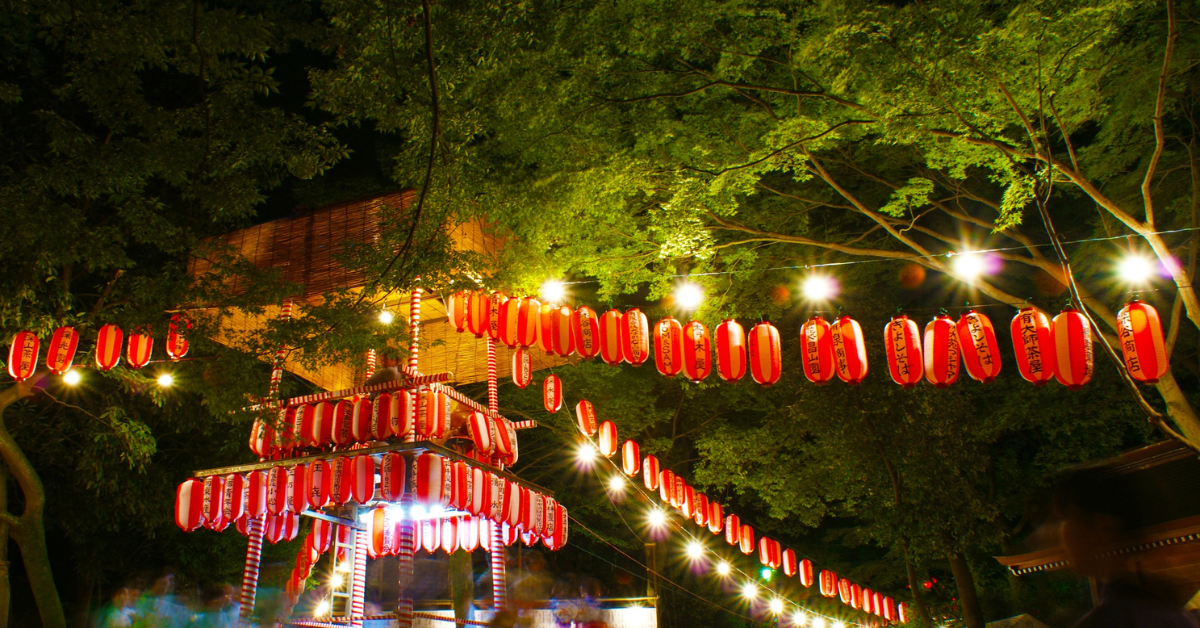Japan’s Three Great Festivals—Kyoto’s Gion Matsuri, Osaka’s Tenjin Matsuri, and Tokyo’s Kanda Matsuri—are among the most iconic celebrations in the country. With centuries of history and spectacular displays, these events attract millions of visitors from Japan and abroad.
Overview of the Three Great Festivals
The Three Great Festivals are symbolic events of their host cities, attracting visitors from all over the world. The table below provides a simple overview.
| Festival | Location | Time of Year | Highlights |
|---|---|---|---|
| Gion Matsuri | Kyoto | July | Magnificent float parade, over 1,000 years of history |
| Tenjin Matsuri | Osaka | July | Boat procession on the river, grand fireworks display |
| Kanda Matsuri | Tokyo | May | Portable shrines parading through central Tokyo, a symbol of Edo culture |
Gion Matsuri (Kyoto)
The Gion Matsuri is one of the oldest festivals in Japan, originating in the Heian period as a ritual to ward off plagues. Hosted by Yasaka Shrine, it lasts the entire month of July. Its highlight is the Yamaboko Junko (float procession) on the 17th and 24th. The enormous floats, some over 10 meters tall, are lavishly decorated with tapestries, carvings, and ornaments, earning them the nickname “moving museums.”
In the evenings, lanterns illuminate the streets, creating a magical atmosphere. Visitors often gather along Shijo-dori and Karasuma-dori to witness the floats up close. The haunting sounds of Gion Bayashi festival music add to the experience, making it a deeply immersive cultural event. For travelers, food stalls selling Kyoto delicacies and sweets offer another layer of enjoyment.
Highlights of Gion Matsuri
| Feature | Description |
|---|---|
| Float Procession | On July 17 and 24, luxurious floats parade through downtown Kyoto |
| Yoiyama | Streets lined with lanterns, food stalls, and open townhouses |
| History | Began in the Heian period as a ritual for plague prevention |
Tenjin Matsuri (Osaka)
The Tenjin Matsuri is Osaka’s most representative summer festival, held in honor of Sugawara no Michizane, the deity of learning, at Osaka Tenmangu Shrine. The climax occurs on July 24 and 25 with the spectacular boat procession (Funatogyo). Hundreds of boats, including the sacred vessel carrying the deity, travel along the Okawa River. At night, more than 5,000 fireworks light up the sky, their reflections glittering on the water.
The best viewing spots are along Okawa River, near Sakuranomiya Park and Tenmabashi Bridge, where boats and fireworks can be enjoyed together. Visitors often wear yukata (summer kimono), blending with the festive local atmosphere. Food stalls offering takoyaki, okonomiyaki, and other Osaka specialties are an essential part of the experience, combining food and festival into one unforgettable memory.
Experiences at Tenjin Matsuri
| Experience | Description |
|---|---|
| Boat Procession | Hundreds of boats create a dramatic river spectacle |
| Fireworks | One of Osaka’s largest fireworks displays lights up the summer night |
| Festival Food | Takoyaki, okonomiyaki, and other Osaka street foods to enjoy |
Kanda Matsuri (Tokyo)
The Kanda Matsuri is a grand festival of Kanda Myojin Shrine, dating back to the Edo period. Once supported by the Tokugawa shogunate, it has remained one of Tokyo’s most prestigious events. Every two years, during the main festival, more than 200 portable shrines (mikoshi) parade through the streets of central Tokyo, including the Imperial Palace area, Nihonbashi, and Akihabara.
Recommended viewing areas include Nihonbashi and Akihabara, where visitors can experience the powerful atmosphere up close. The fusion of modern skyscrapers with ancient tradition creates a unique contrast rarely seen elsewhere. Within the shrine precincts, festival stalls and stage performances add to the vibrant atmosphere, giving visitors a taste of Edo-period entertainment and food culture.
Highlights of Kanda Matsuri
| Feature | Description |
|---|---|
| Mikoshi Parade | Over 200 portable shrines carried through central Tokyo |
| History | Supported by the Tokugawa shogunate, with deep Edo-period roots |
| Uniqueness | Tradition unfolding in the middle of modern Tokyo |
How to Enjoy Japan’s Three Great Festivals
These festivals are not only for spectators; they can be immersive experiences when travelers actively participate. Here are some ways to enjoy them:
- Dress in festival attire: Wearing yukata or jinbei enhances the festive mood
- Taste traditional foods: Try takoyaki, yakisoba, kakigori, and regional specialties
- Capture the atmosphere: Floats, fireworks, and portable shrines make perfect photos
Practical Tips for International Travelers
| Category | Information |
|---|---|
| Language Support | Tourist information centers often have English-speaking staff |
| Access | Kyoto, Osaka, and Tokyo are all connected by the Shinkansen |
| Participation | Yukata rentals, food stalls, and guided tours are widely available |
Conclusion
Japan’s Three Great Festivals each offer a unique window into Japanese culture. Gion Matsuri dazzles with elegance and artistry, Tenjin Matsuri thrills with energy and fireworks, and Kanda Matsuri impresses with the blend of tradition and modern city life.
For international visitors, these festivals are more than sightseeing events—they are living traditions that reveal the spirit of Japan. Experiencing them means tasting local food, joining in the atmosphere, and learning about history and faith that continue to shape the culture today.
By visiting Kyoto, Osaka, and Tokyo during these festivals, travelers can immerse themselves in the beauty, energy, and heart of Japan, creating unforgettable memories that go beyond tourism.






